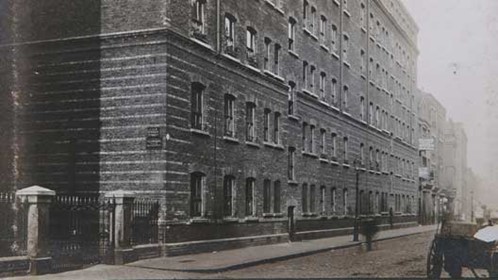Roscoe Street estate today looks very different from its original appearance. It was one of the ten estates that we built in Victorian times as part of official slum clearance schemes.
Eleven blocks of typical Peabody flats were opened in 1883. There was a laundry room in each block, but the estate didn’t have a bathhouse. The coal store was large enough to hold 20 tons of coal, and there were 32 pram sheds.
The estate suffered severely during the Second World War. Six blocks were burnt out as a result of an air raid in December 1940, and two more blocks were badly damaged in 1941.
When the war ended, we decided not to rebuild the original blocks, but to demolish the ruins and start again. We expanded the area by buying the site of a church which had also suffered war damage. Two closed burial grounds were incorporated into the site after the removal of the human remains.
We opened the first of the new buildings in 1957. They were 13 storeys high and had two blocks each. It has sometimes been said that they were London's first tower blocks, but this isn’t correct, as the public authorities had already built some tower blocks. However, they were the first multi-storey blocks which were allowed to be built without a second staircase. St Mary's Tower is named after the demolished church.
Eventually the last four Victorian blocks were also demolished so that Banner House could be built in 1972.

Got a question about our archive – or have a story to tell?
Please email: history@peabody.org.uk
Please include a postal address or telephone number so that we can reply to you.
